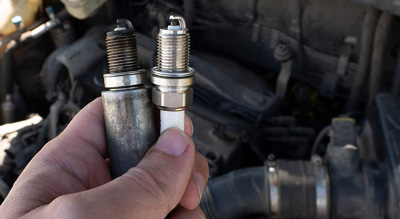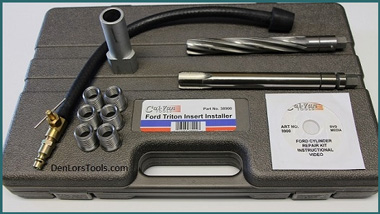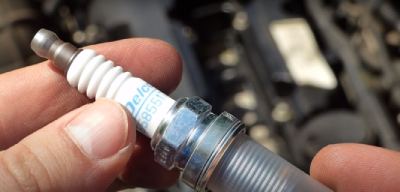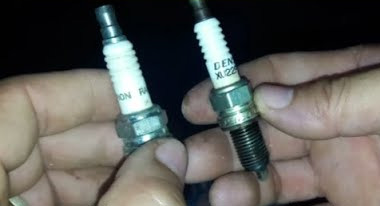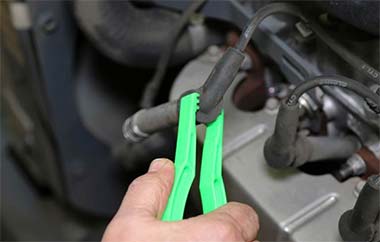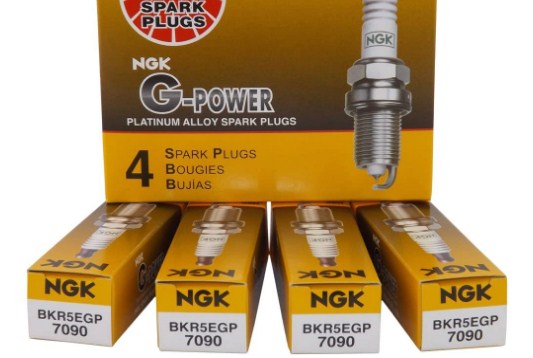What Does a Spark Plug Do: Purpose and Function Efficiency
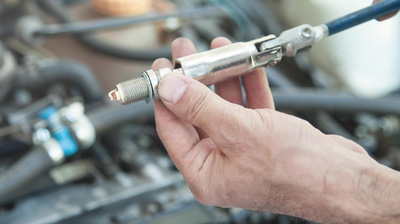
Have you ever wondered how your vehicle’s engine work or from where it gets the power source? The power source is the spark plugs simply. But What Does a Spark Plug Do?

These miniature plugs provide electricity from one lead to another to produce the engine power. Hence, these are the components that keep your vehicle going smoothly.
What is a Spark plug: What does Spark plug do?
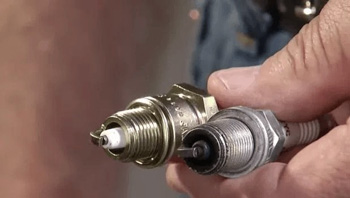
Spark plugs are small metallic devices that create electricity from the ignition of air/ fuel mixture in the chambers. That electricity creates an explosion that makes the engine produce power to run.
Here are some key points about the function of a spark plug:
- The spark plug creates an electrical spark that ignites the fuel mixture in the engine’s cylinders.
- The spark plug is inserted into the engine’s cylinder head and is connected to an ignition coil or distributor that supplies the electrical energy required to create the spark.
- The spark plug is designed to withstand high temperatures and pressures and is made from materials such as ceramic, copper, and steel.
- Spark plugs come in a variety of sizes and heat ranges, which must be carefully matched to the specific engine they will be used in.
- Over time, spark plugs can become fouled or worn, which can cause misfires and reduce engine performance. Regular maintenance and replacement of spark plugs are important to ensure optimal engine performance and fuel efficiency.
The spark plugs are situated within closed gaps, making the electricity flow more rapidly between them.
Does Spark Plug Affect Fuel Consumption?
When a spark plug is worn out, bad, or defective, the consequences can be serious. A bad spark plug can lead to incomplete combustion, making your car’s fuel consumption less efficient. In other words, if your spark plug is faulty, your engine will burn more fuel than it should, decreasing fuel efficiency.
What Does A Spark Plug Do In A Lawn Mower
The spark plug is part of the lawn mower engine that ignites the air-fuel mixture within the cylinder. It creates a spark between two metal electrodes, which ignites the fuel in the cylinder and powers the engine. Without a spark plug, gasoline in the cylinder would not ignite and the engine wouldn’t run.
What Does A Spark Plug Do In A Motorcycle
The spark plug’s job is to create a spark at the right time and place. It is necessary to create a combustion event, which then turns the fuel and air mixture into energy. The combustion event needs to be exact and occurs when the piston is at the correct position of its rotation. The engine won’t run or achieve the right power output if it doesn’t happen at the right time.
What Does A Spark Plug Do On A Dirt Bike
There are several different types of spark plugs for dirt bikes, each designed for different needs. Standard copper-cored spark plugs are designed for general-purpose use in most dirt bikes, while platinum-tipped spark plugs offer improved engine performance and longer life. Some high-end racing dirt bikes may also use iridium spark plugs, which provide a hotter spark and longer engine life.
What Does A Spark Plug Do In Granny
Spark plugs work in conjunction with your engine’s electrical system. An electrical current flows from the spark plug, creating a spark that ignites the air-fuel mixture in the combustion chamber. This allows the fuel to burn, resulting in power from the engine.
How Can You Test A Spark Plug?
Here’s everything you need to know about testing a spark plug.
1. Visually Inspect the Spark Plug
First, before you start testing the spark plug, you should inspect it for any damages or signs of wear and tear. If the spark plug looks damaged, it’s best to replace it as it might not function properly.
2. Remove the Spark Plug From the Engine
The next step is to remove the spark plug from the engine. This can be done using a spark plug socket, extension bar, or regular socket. Wear safety gloves and goggles when working with any engine parts.
3. Check the Spark Plug’s Gap
The spark plug’s gap is the space between the center electrically and the ground electrode. The gap plays a vital role in the spark plug’s performance and should be measured using a spark plug gap tool.
4. Inspect the Tip of the Electrode
Checking the electrode tip is another way of testing the spark plug. You should look for any signs of wear and tear, carbon deposits, or any other signs that the plug might malfunction.
5. Check the Resistor of the Plug
The resistor, located on the side of the spark plug, is responsible for creating the spark that helps ignite the fuel and air mixture in the engine. If this resistor is corrupted, it can lead to the spark plug not working correctly. To check the resistor, you’ll need a multimeter.
6. Test the Electrical Connectivity of the Spark Plug
Finally, once you’ve checked the spark plug visually and all the components seem to be working and in good condition, you can test the electrical connectivity and ensure the spark plug is working. For this step, you’ll need a spark tester.
Spark plugs cost-
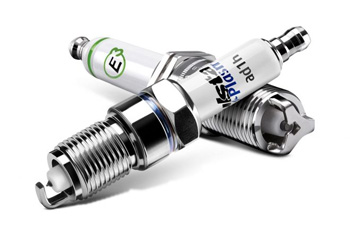
Start from 4$
What happens when spark plugs go bad
When the spark goes bad, you will see some notable changes in your car’s performance. Though the changes won’t be too noticeable initially, as the bad spark plugs remain unnoticed, the issues worsen.
Some of the arising issues are acceleration slowing down, the car starting to consume more fuel than usual, hard starts, engine misfiring, and idling.
You will get encountered some absurd ratting, coughing, or sneezing noises from the engine as well.
How does a spark plug work
Spark plugs are connected to an ignition coil that creates a high voltage. The voltage difference is made in the electrodes of the spark plugs as the coil produces electricity.
Hence the spark plugs get power. Afterward, the spark plugs ignite air/ fuel mixture through a spark in their combustion chamber to jump-start the engine.
Spark plug problems
Over time, as your car ages, its spark plugs also face some problems, which lead to the car’s underperformance.
Even if you maintain it well, problems have to arise someday. Those are oil and carbon deposits on the electrodes and injector tips, which happen in the ignition—chalky, white-casted plugs caused due to overheating.
Brownish-tanned plugs are a result of obsolescence.
How long do spark plugs last
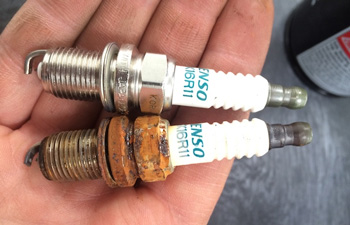
If you work for a life expectancy, spark plugs last from 1 year to a maximum of 2.5 years if you maintain them well.
A set of good quality spark plugs made of platinum or iridium will serve your engine up to 30,000 miles without replacement.
At the same time, an average copper or metal spark plug can support up to 20,000 miles.
Types Of Spark Plug
The first type of spark plug is the copper spark plug. The copper alloy has high heat transfer characteristics, allowing electrons to move quickly and easily—allowing for a quick, reliable spark.
The second type of spark plug is the silver spark plug. Some prefer silver spark plugs because of their corrosion resistance, although they cost more than copper plugs. Silver spark plugs also offer a slightly higher heat range than copper spark plugs, enabling them to withstand higher temperatures in performance applications.
The third type is the iridium-tipped spark plug. As a rare metal, iridium spark plugs offer superior performance. They have a higher heat range than copper or silver spark plugs and must be replaced less often.
The fourth type of spark plug is a double platinum spark plug. These spark plugs are leather coated and have two layers of platinum, reducing maintenance and wear and tear on the spark plug.
The fifth type of spark plug is a single platinum spark plug. These spark plugs feature a single layer of platinum, providing improved performance while reducing fouling due to their build and design.
What Do Spark Plugs Do When Going Bad
When spark plugs start to go wrong, many problems can arise. It is often the cause of misfires and a decline in performance, but it can also cause mechanical issues such as faulty spark plug wires, clogged carburetors, dead coils, and more.
The heat range of spark plugs is significant, and when it is too low for your engine, it will cause the plug to become fouled up with deposits over time.
What Does A Spark Plug Do In A Small Engine
A spark plug is an essential part of a small engine and does much more than many people realize. A spark plug creates a spark necessary for the combustion process to occur in a gasoline engine.
This spark is created when an electric current is sent through a small gap between two electrodes on the spark plug. The spark ignites the fuel/air mixture inside the cylinder of a small engine, which then causes the piston to move up and down and generate power.
What Does A Spark Plug Do On A Scooter
A spark plug converts electrical energy into heat energy. The spark plug is located in the combustion chamber and is connected to the battery, sending an electric current to the spark plug. This electric current passes through the spark plug, creating a spark that ignites the fuel in the combustion chamber.
What Does A Spark Plug Do On A Boat
The spark plug provides a reliable spark to start the boat engine’s ignition system and ensure it operates reliably. The spark plug’s design is such that it produces an electrical current when supplied with an electrical voltage. The voltage from the spark plug wire then passes through the spark plug to ignite the air and fuel mixture in the cylinder.
What Does A Hotter Spark Plug Do
The higher temperature involved with hotter spark plugs leads to increased combustion efficiency. By raising the temperature, more of the air-fuel mixture is burned in the engine cylinder, leading to complete combustion. This, in turn, leads to greater engine power and torque output.
The hotter spark plugs also live longer than those at regular temperatures. This is because the higher temperature helps to reduce the build-up of carbon deposits around the spark plug surface. This build-up of surface deposits can lead to spark plug misfiring, leading to poorer engine performance.
Do spark plugs waste more gas?
The answer to this question is an emphatic yes. When the plugs become worn or damaged, they struggle to create a sufficient spark, leading to incomplete and wasted fuel combustion. This causes increased hydrocarbon emissions and decreased engine power, resulting in decreased fuel efficiency and potentially increasing your fuel bill.
How do you test a spark plug?
To test your spark plug, you need first to attach it to the distributor, turn the ignition on and start your engine.
When your spark plug is attached, and the engine is on, inspect the spark plug for any physical indications of damage or wear and tear.
Next, test the spark plug for performance. A spark tester is a tool that you can use to measure the amount of spark given off from the plug.
Can I use petrol to clean spark plugs?
Using petrol to clean spark plugs is very simple and effective. All you need to do is get some ordinary gasoline and apply a cloth or paper towel to the spark plug. Make sure to cover the entire plug surface, applying it evenly. Let it sit for a few minutes, and then remove it with a cloth or paper towel.
Is it OK to clean spark plugs with WD-40?
Yes, in certain circumstances, WD-40 can help clean spark plugs. WD-40 is a multi-purpose lubricant and a water displacement agent. This means it quickly cuts through grease and grime, making it an excellent product for cleaning and removing dirt from spark plugs.
What does a bad spark plug look like?
When looking at a faulty spark plug, the most common issue is the appearance of blisters or bulges on the porcelain insulator.
What can burn out spark plugs?
The most common cause is excessive heat. As the spark plug heat range increases, its effectiveness as an igniter decreases. A spark plug may also be damaged due to using fuel with too low of an octane rating, excess oil or an inadequate air/fuel mixture.
What are the symptoms of bad spark plugs?
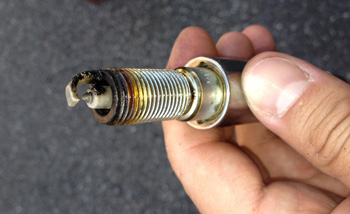
The symptoms of bad or dying spark plugs are quite obvious to determine.
Your vehicle’s overall performance will fall due to reduced gas mileage, excessive engine exhaustion, reduced acceleration, time-consuming to start the engine, rough engine idling, loud noises from there, and much more.
If these symptoms are overlooked from the beginning, spark plugs will die eventually.
Spark plug diagram
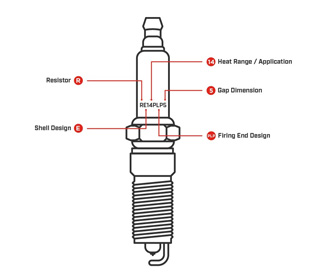
Benefits of changing spark plugs
Spark plugs are changed either they got bad before time or their life expectancy is over. Whatever the cause is, replacing them with brand new sets of spark plugs will make your car journeys more prominent, smooth, and trouble-free.
Hence, the engine works at its best with those issueless spark plugs, keeping the car going with its full power.
When does the spark for ignition occur
The spark for ignition occurs when the high voltage ignition coil produces electricity into the spark plugs’ center and the ground electrode.
Hence, the spark is created to ignite the air/ fuel mixture in the combustion chambers to power the engine.
What are the symptoms of bad spark plugs?
There are lots of ways to tell if your spark plug isn’t working properly. Click here to know detailed symptoms of a bad spark plug.
How often should you change spark plugs?
Simply, change them when their life expectancy overs. The spark plugs’ life expectancy of your vehicle is mentioned in your car’s maintenance booklet, so adjust them accordingly.
At most, replace them within every 2-3 years depending on how often you use your car.
However, if the spark plugs get bad in between the expected changing time, you should also change them, or else it will affect your vehicle’s performance.
What happens if you don’t change the spark plug?
A worn-out or bad spark plug cannot function properly. It cannot properly ignite the air/ fuel mixture to create the combustion, so the fuel utilization remains incomplete.
As a result, your vehicle will lose more fuel without serving the required mileage, and acceleration will hamper, the engine won’t start in one go, and whatnot! After seeing all these, even if you don’t change them, the engine will stop working.
FAQs
Do Spark Plugs Make Your Car Faster?
That being said, new spark plugs can still make your car feel faster. This is because of the improved efficiency in the combustion process, which will in turn make the car more powerful. The more efficient the combustion process is, the more power you can expect from your engine and the faster it will be.
Can You Run Without A Spark Plug?
The short answer is yes, but it’s not recommended. While it is technically possible to run an engine without a spark plug, the engine would not run as efficiently as it would with the spark plug and would not produce as much power.
How Long Do Spark Plugs Last In A Car?
Generally speaking, they should last anywhere from 30,000 to 50,000 miles. However, many factors play into how long a spark plug will last in any given car, such as the type of spark plug and the engine’s condition.
Are Spark Plugs Only For Starting?
While spark plugs might be most famous for getting the vehicle’s ignition system started and running, they can also be used for other purposes. Spark plugs can play a key role in helping keep your engine clean, running efficiently, and help reduce emissions.
RELATED SPARK PLUGS ARTICLE(S)-

